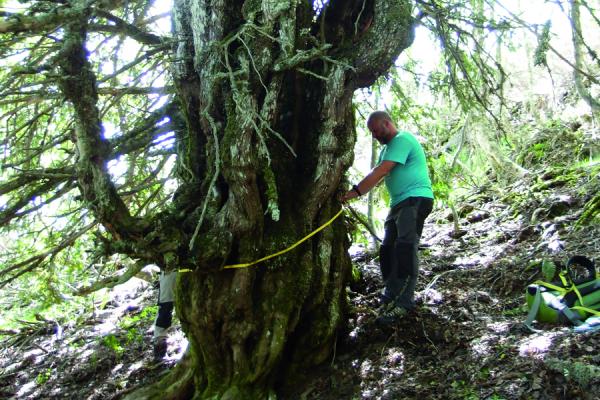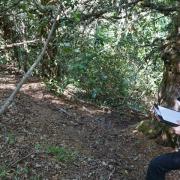Results of the “Mediterranean forests of Taxus baccata” characterization in the Cantabrian Mountains of Castile and Leon da Cordilleira Cantábrica en Castilla y León
01-02-2019

The characterization of 9580 Habitat* at the ‵Mediterranean Forests of Taxus baccata′ in the Cantabrian Mountains of Castile and Leon was done from various perspectives, as one of the multiple actions implemented within the LIFE BACCATA Project.
This study started running a bibliographic search and a number of surveys to define the specie distribution across the territory. Then an inventory of 55 representative populations from 13 Special Areas of Conservation (SAC) was completed which was followed by a survey of their forest mensuration and biophysics features, as well as their forest and ecological dynamics. To do so the traditional sampling techniques, Geographical Information Systems and a combination of high precision mapping photogrammetrics were used.
Then for each of the surveyed stands, a diagnosis of their conservation status and pressures and existing threats was made. In parallel, several permanently monitored plots at a medium/long term were mapped. The analysis of such plots included a survey of the researched formations maturity and naturalness. In order to complete the inventory of threatened and singular biological diversity of the Castile and Leon yew forest, several populations were selected with the aim of inventorying the lichens and bryophytes communities, as well as the entomofauna associated with these slightly modified forest patches.
This study started running a bibliographic search and a number of surveys to define the specie distribution across the territory. Then an inventory of 55 representative populations from 13 Special Areas of Conservation (SAC) was completed which was followed by a survey of their forest mensuration and biophysics features, as well as their forest and ecological dynamics. To do so the traditional sampling techniques, Geographical Information Systems and a combination of high precision mapping photogrammetrics were used.
Then for each of the surveyed stands, a diagnosis of their conservation status and pressures and existing threats was made. In parallel, several permanently monitored plots at a medium/long term were mapped. The analysis of such plots included a survey of the researched formations maturity and naturalness. In order to complete the inventory of threatened and singular biological diversity of the Castile and Leon yew forest, several populations were selected with the aim of inventorying the lichens and bryophytes communities, as well as the entomofauna associated with these slightly modified forest patches.
 Image 1. A transect performed next to a permanent plot.
Image 1. A transect performed next to a permanent plot.The following results were obtained from the collected information:
- A proposal to discuss a new definition of the yew forest concept.
- The definition of indicators for the monitoring of yew forests conservation condition.-
- The establishment of a set of forestry active conservation measures to lead, according to the Habitats Directive, a large proportion of the inventoried populations towards a middle-term advantageous conservation condition.
The herbivore pressure over the regenerated yew tree and its floristic entourage, the interspecific competition with other tree species as beech trees, the direct human pressure and the climate change are the main hinders for the preservation of these populations which altogether represent one of the largest HIC 9580* wild manifestations in the Iberian Peninsula and European Union.
The LIFE BACCATA Project is cofounded by the European Commission in the framework of the LIFE Call and it will be implemented between 2016 and 2020 in fifteen locations of the Red Natura 2000 in the Cantabrian Mountains, which belong to Galicia, Castile and Leon, and the Basque Country. The University of Santiago de Compostela participates as the coordinator of the project and the Regional Government of Castile and Leon, Cesefor, Hazi Fundation and TRAGSA Group as partners.



